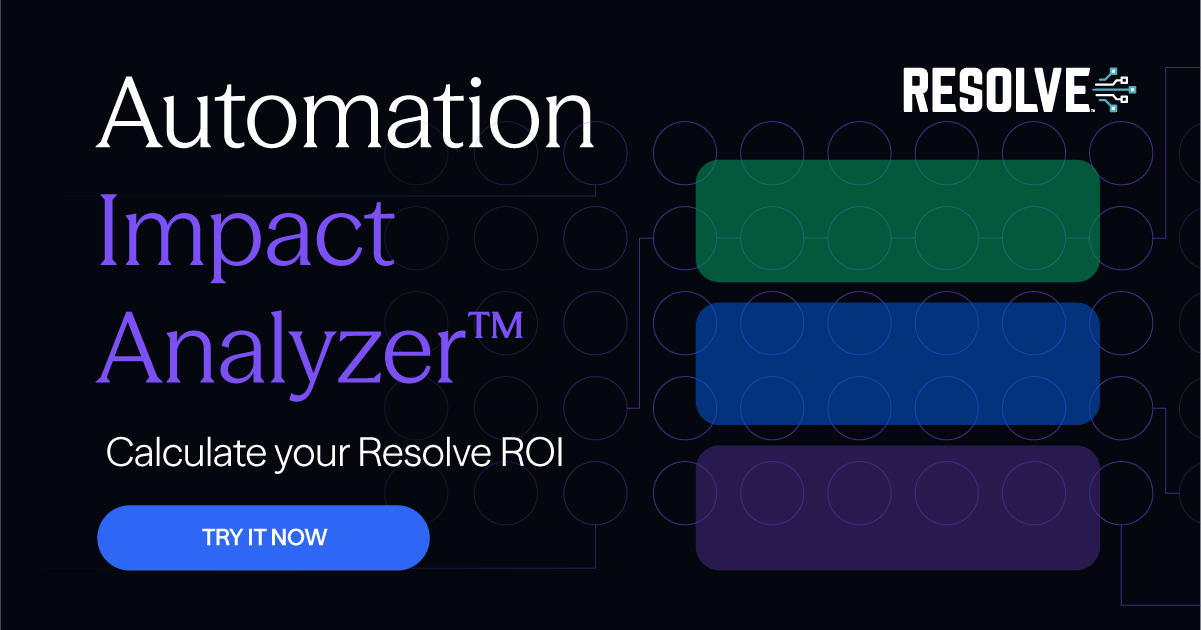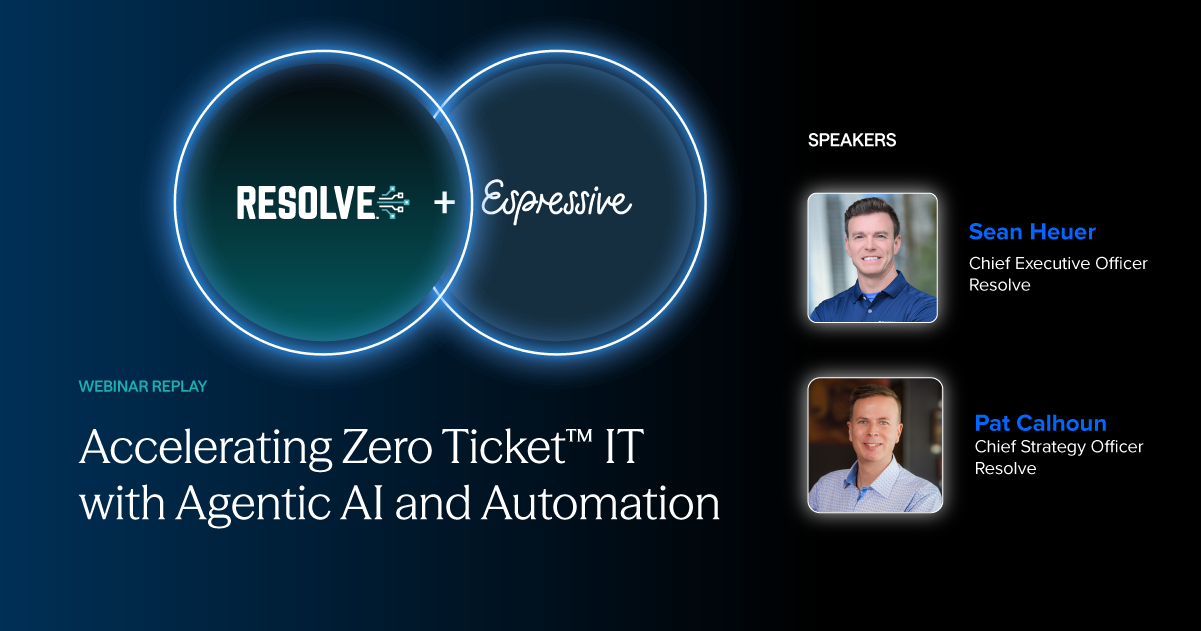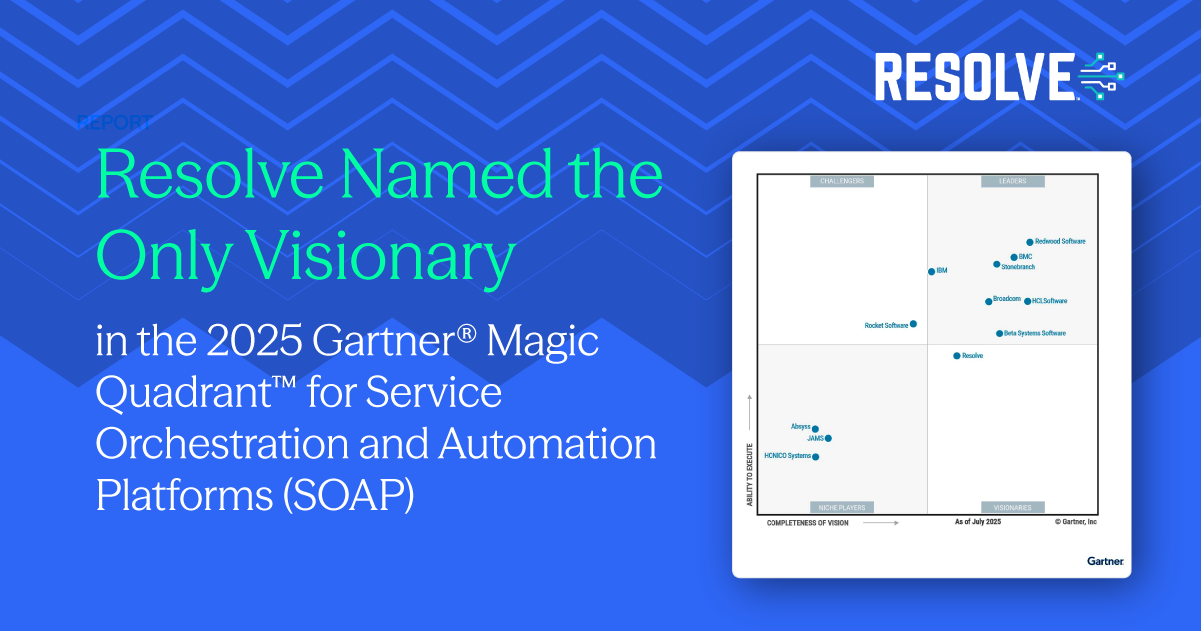
Maximizing Automation ROI: The 8 Use Cases You Need to Know
Subscribe to receive the latest content and invites to your inbox.
When people hear the phrase "process automation in IT," they first think of the purely technological benefits. These include automated incident resolution, meaningfully improved process orchestration, reduced ticket volumes, and more.
The factor that should be just as top-of-mind, though, is something that's vital to both your automation program's longevity and your organization's overall success: automation ROI. Measuring automation ROI is an effective way to not ‘just' verify how well your program is doing, but to directly tie it to your organization's financial success and therefore guarantee further support from executives and stakeholders.
What follows is my take on everything automation ROI: how to measure it, the factors to look out for, quantifying its success, and keeping your process automation success rolling. Here we go!
Principles of Automation ROI
As we dive into this topic, it's natural to wonder what automation ROI's biggest metrics are. Which elements of your IT ecosystem should you pay especially close attention to no matter where you're at in your process automation journey?
There are a lot of places to look, but the following are the best, both in terms of improving your digital environment and for the purposes of proving your automation's effectiveness.
1. Time to Value
When time to value matters, unnecessary truck rolls are a major drain on IT teams. They eat up valuable hours, disrupt productivity, and slow down operations. Automation eliminates wasted trips, drastically reducing truck rolls and delivering immediate efficiency gains.
The result? Thousands—sometimes tens of thousands—of hours saved annually, faster issue resolution, and a stronger automation ROI. Plus, your overworked technicians will finally have time to focus on what truly matters.
2. Cost Savings is Just the Beginning
Reducing operational costs—whether through lower labor expenses, fewer manual errors, or improved resource utilization—is a key driver of ROI. However, the true value of automation extends beyond cost reduction to areas like improved agility and innovation.
By rapidly preventing costly downtime, expediting communications, and orchestrating processes, organizations can save millions in operations costs every month.
Numbers like that are nothing to scoff at and bringing that automation ROI to the boardroom will go a long way toward achieving additional sponsorship.
3. Productivity Gains Drive Impact
One of the greatest challenges that every IT team faces is responding to large volumes of tickets in a timely fashion. That may look a bit different for each organization, but the principle is the same: teams must work to expediently resolve raised issues before they affect the customer experience and the bottom line.
A great way to prove automation ROI is by noting how much it drives productivity and reduces two variables: ticket volume and resolution time.
Cutting ticket volumes by 50% and changing resolution time from 30 hours to one minute can make a significant difference to the business.
By eliminating repetitive, manual tasks, automation enables teams to focus on high-value initiatives. Measuring efficiency improvements, such as reduced resolution times or increased throughput, is critical for assessing ROI.
4. Risk Reduction and Compliance
Automation minimizes human error, enforces standard operating procedures, and enhances compliance.
The financial impact of avoiding costly mistakes, downtime, or regulatory fines contributes to ROI.
5. Scalability and Long-Term Growth
A successful automation strategy is scalable and adaptable. Investing in automation that evolves with business needs ensures sustained ROI over time, rather than a short-term fix.
6. Business Agility & Innovation
Automation enables faster decision making, streamlined workflows, and adaptability to changing business demands. This agility translates to improved customer satisfaction, faster go-to-market strategies, and a competitive edge.
7. Data-Driven Optimization
Measuring automation's impact through analytics and performance tracking allows organizations to refine processes, optimize resources, and continuously improve ROI.
Automations That Quickly Demonstrate ROI
We've discussed the pillars of automation ROI, and why they're great for making your process automation initiative's financial impact plain as day for stakeholders and sponsors. But which specific implementations can help you reach that goal quickly, without compromising your existing quality of service?
The best automation platforms empower IT teams to rapidly demonstrate ROI at a brisk pace. These use cases include:
1. Incident Resolution to Reduce MTTR
Accelerating incident resolution is one of the most impactful automations for ROI. Organizations can drastically reduce Mean Time to Resolution (MTTR) by automating diagnosis, triage, and remediation, minimizing downtime and improving service reliability.
Faster resolution means fewer disruptions, lower operational costs, and increased productivity—delivering immediate and measurable returns on automation investments.
2. Ticket/Alert Enrichment
Ticket enrichment ensures that IT teams receive complete, contextualized information before they even touch an issue. Instead of manually gathering data, automation enriches tickets or alerts in real time by pulling relevant details from monitoring tools, logs, and historical incidents.
This reduces time spent on investigation, accelerates resolution, and minimizes back-and-forth between teams. With automation handling enrichment, IT can focus on solving problems instead of chasing information.
3. Upgrades, Policy Rollouts, and Configuration Drift Remediation
Upgrades, policy rollouts, and configuration drift remediation eliminate manual, repetitive tasks that consume valuable IT resources.
Automating these processes ensures consistency, reduces human error, and accelerates execution—driving efficiency while minimizing downtime. By proactively enforcing compliance and maintaining system integrity, organizations save both time and money, maximizing operational resilience with minimal effort.
4. Enabling Proactive Network Health Checks
One of IT's biggest cost centers is reacting to problems only as they arise. Organizations lose money from the problem itself, but must also sink valuable resources into rectifying it. Automation allows teams to be proactive instead of reactive, with scheduled workflows that update general infrastructure, networks, and other crucial systems in a manner that prevents problems before they impact performance.
5. Leveraging Intelligent Chatbots
Most organizations have chatbots on their websites by now. But industry leaders use IT chatbots that can trigger pre-built, IT-approved automations that help fulfill certain requests or answer commonly asked support questions.
6. Automatically Left-Shift Escalations
Automation empowers IT administrators to hand complex service requests and incidents off to L1 operators. They can then use SME-approved and developed automations to take some of the workload off of their higher-level peers without being granted direct access to critical systems, saving time for more valuable personnel.
7. Eliminate False Positive Alarms
False positive alarms overwhelm IT teams, causing alert fatigue and wasted effort. Automation helps by intelligently filtering, correlating, and validating alerts in real time—reducing noise and ensuring teams focus only on genuine issues.
By applying predefined logic and AI-driven analysis, automation can help you dismiss irrelevant alerts, escalate critical ones, and even remediate problems instantly, freeing IT from constant firefighting and improving overall system reliability.
8. Change Management Capabilities
Automation streamlines change management by enforcing consistency, reducing errors, and accelerating approvals.
It ensures that changes—whether configuration updates, patches, or deployments—follow predefined workflows and automatically log actions for compliance.
With automated validation and rollback mechanisms, teams can minimize risks and avoid downtime. By integrating with ITSM and CI/CD pipelines, automation improves collaboration across teams, ensuring smoother, more efficient change execution with minimal disruption to business operations.
Additional Considerations
These 8 ideas are but a few of the things that IT teams can implement in a way that creates substantial automation ROI in little time. Whether it's supercharging your call center or saving valuable time responding to alarms and tickets, the benefits of this technology can quickly become apparent to the teams working on the ground and the executives whose sponsorship is key to keeping your initiative going.
So, now that we've tackled how easily automation can furnish considerable ROI, the next question must be asked: how can IT teams find a platform whose automation assures that outcome every single time?
Finding a Platform that Delivers High, Quick ROI
There's a dizzying array of IT improvement platforms out there, but only a few can deliver truly AI-powered process automation that can demonstrate ROI in all of the ways that we've discussed. These select few platforms can also help you reach that goal quickly and make a splash, both in your IT ecosystem and across your greater organization.
These platforms have a few traits to watch out for; traits that separate them from marketplace laggards and that indicate they're mature enough to help you achieve your automation ROI goals. Those traits are:
Ready-to-Use Blueprints
Your team can't achieve automation ROI without expedient, powerful technology. Therefore, keep an eye out for a platform that provides field-tested automation actions, starter templates, and versatile integrations. These capabilities will help you fast-lane your automation initiative and thus your ROI timeline.
In-Depth Automation Library
Another capability that can help you get the jump on automation ROI is a library that comes packed with pre-built automations. Your team can save time by finding one of these flows, tweaking it as needed, and implementing it within your IT ecosystem without skipping a beat.
Extensive Third-Party Integrations
The best process automation platforms can integrate seamlessly and bi-directionally with any IT tool. When this happens, you can unlock your existing tools' maximum potential, allowing for quicker automation ROI.
Low-Code Automation Builder
A great automation platform comes packed with pre-built capabilities to help you get a head start, but if you have a custom setup in mind, they must also provide an accessible, easy-to-use, and low-code automation builder. This capability gives you the versatility to build around your ROI strategy as much as you need to.
Versatile Deployment Models
The platform you need for automation ROI shouldn't slow down depending on your setup needs. Vendors that can dispatch teams to on-premises setup or partner with your operators remotely without a discernable change in service delivery are the ones that will help you achieve your goals the most succinctly.
The Road to Automation ROI
Achieving automation ROI isn't as simple as wanting it ... but it's not much more complicated than knowing its most powerful benefits, the technology that achieve those benefits, and finding a platform that provides those technological capabilities every time without fail. The stages of the automation ROI journey truly are that simple.
Once you have your platform, its capabilities, and the benefits therein, you can quantify a direct link between your process automation initiative and the success it generates for your organization. Automation ROI strengthens the bottom line, but perhaps most importantly, it creates tangible experience improvement for customers and employees.






